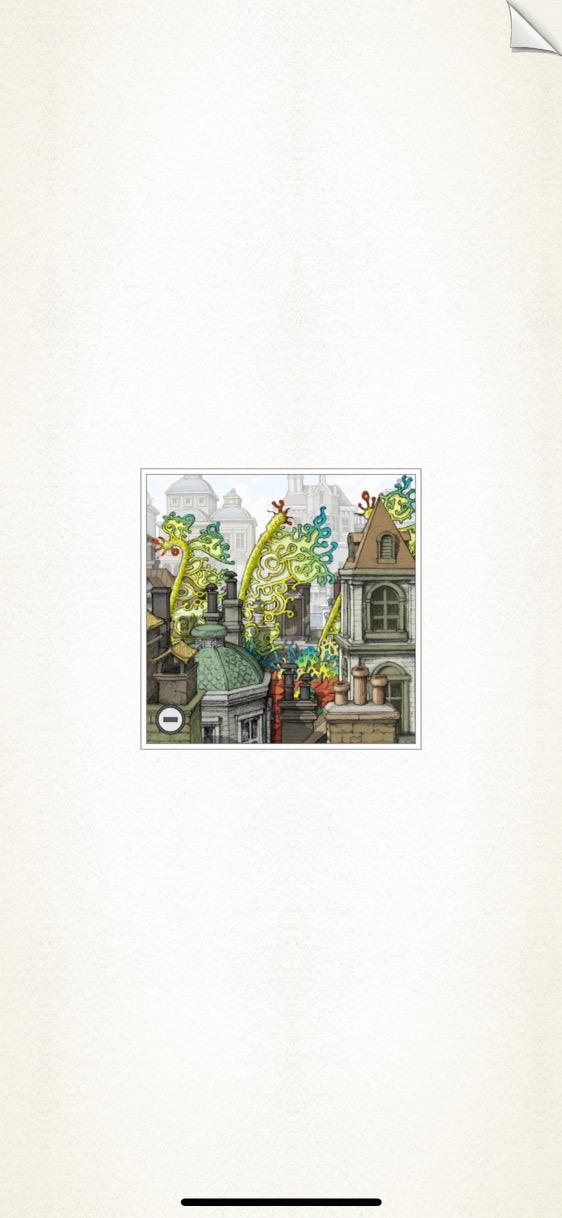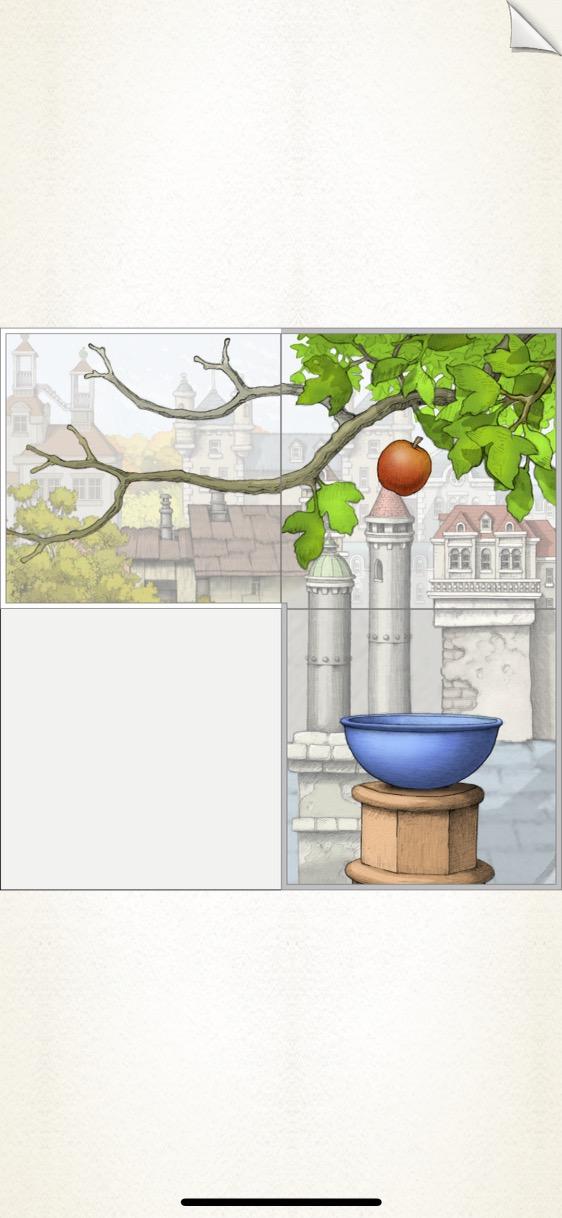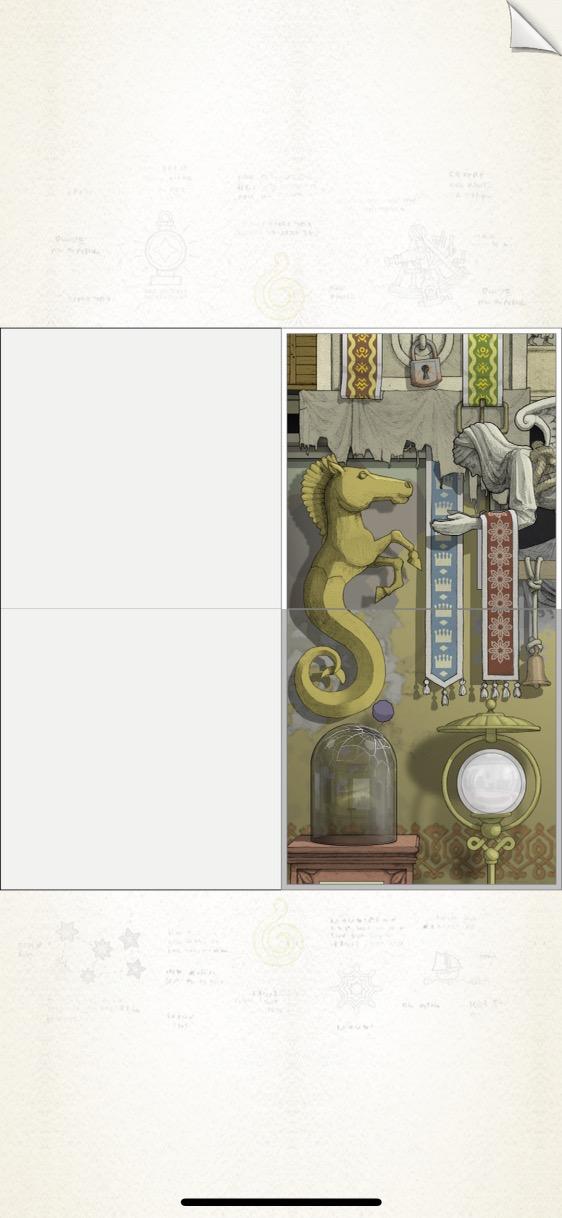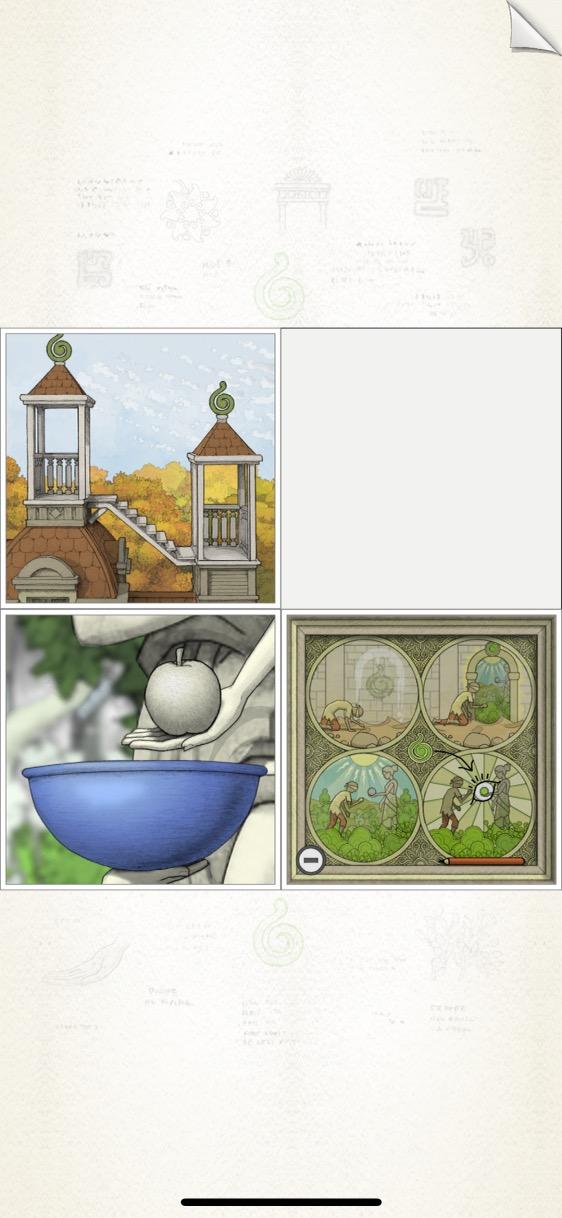Gorogoa is quite possibly the prettiest game I’ve ever played. The entire world of Gorogoa exists in a 2×2 grid, in which the four drag-and-drop panels allow you to create complex and dynamic views into this beautiful, detailed, and illustrated world. It is the simplicity of the mechanics that add to the beauty of the game, and I appreciate how fair, yet thoughtful, the puzzles are.

The main mechanics of the game include stacking tiles on top of one another, placing tiles adjacent to each other, and zooming in or moving left/right/up/down within the tile. The main objective is to arrange the tiles such that the main character, a boy in a red shirt, can venture through the world to collect 5 colored fruits. Hints are scattered throughout the tiles, which can be analyzed further by zooming in on them.
Though Gorogoa’s mechanics are simple, I still found myself completely immersed in this tiny grid world. The simplicity of the mechanics didn’t take away from the complexity of the game, and actually contributed to my experience because it allowed me to focus on the puzzles. The intricate illustrations are crucial to the overall puzzle-solving as well, since it is the detail of the illustrations that allow you to see how to match up tiles and what tiles can be put over another tile. For example, one of the first puzzles I solved was rearranging the tiles in a way such that the grids formed a tree, from which an apple fell into a bowl — this was the first fruit that the main character retrieved. I think the beauty of Gorogoa is that moving around the grids form such different images of the world to the player. Zooming in and out on hints and moving around the tiles allow you to solve all kinds of puzzles, with the immediate reward being a live-action animation of the world you’ve just constructed. Once you match up just the right tile, not only are you one step closer to retrieving all 5 fruits, but you’re able to see a live animation of the puzzle you’ve just solved, before moving on to the next chapter.

One of the puzzles that I found the most rewarding and fun was a puzzle in which a butterfly essentially guided you through the entire puzzle. It required aligning tiles such as the one below to move around a purple ball, which would eventually crack open the glass cage for the butterfly to fly out of. The butterfly was attracted to light, so one of the primary goals and ways to solve the puzzle was finding ways to light up lamps. For example, one lamp was lit up by stacking a tile on top of another to frame a star in the sky. The butterfly would then fly over to this light, and new puzzles would emerge.

Gorogoa promotes three main types of fun for me: Discovery, Challenge, and Sensation. Placing tiles next to each other, or stacking tiles on top of one another to complete a completely new image (e.g. some tiles had a cut-out which could be used to frame a part of another tile), generated completely new images that allowed me to discover new settings within the world and uncover new hints. These hints were integral in piecing together the tiles in a way that allowed the main character progress forward (e.g. aligning train tracks which spread across two tiles, putting two tiles side-by-side so that the main character could get on a train that rode through both tiles). One detail that I admired a lot about Gorogoa is that all of the hints were text-free. You’d think that this would make the game much more difficult, but I found this aspect of the hints refreshing because it fit into the flow of noticing a pattern within a hint and trying to spot that pattern in the larger world that the main character navigated through. I also think because of this, the game is made more accessible — anyone can play. I found some of the puzzles slightly challenging, but never impossible. This is something I appreciated very much about Gorogoa — last week, I played Nox, which was a thoughtfully crafted game as well, but I often found myself frustrated because it felt as though I was running around in circles. Though the mechanics were similar to Gorogoa, I was often touching the screen with no real direction or purpose; in Gorogoa, it’s clear which parts of the tile you should touch and which tiles should be moved around because there was often a light radiating around the items that the player should pay attention to. The fact that there was an actual character moving through the tiles was also very helpful in solving the puzzles, since it motivated the rearrangement of the tiles so that the character could retrieve all five fruits. Lastly, the score was constructed so thoughtfully. The music subtly changes depending on the positions of the tiles, and I especially appreciated the music at the end, when it’s revealed that the journey through the world of collecting fruits is a flashback of an old man’s life. This contributed greatly to the sensory experience of the game, especially since I had earbuds on while playing. I felt truly immersed in the main character’s journey.

One thing I’d change about Gorogoa is its length. The game didn’t take very long to get through, as there are only five chapters to the game (for each of the five fruits). Additionally, I think it could be helpful to enlarge the tiles (or ensure that the tiles took up the entire screen), so that the experience feels more captivating. However, these are small complaints — I’d recommend this game to players of all ages.



